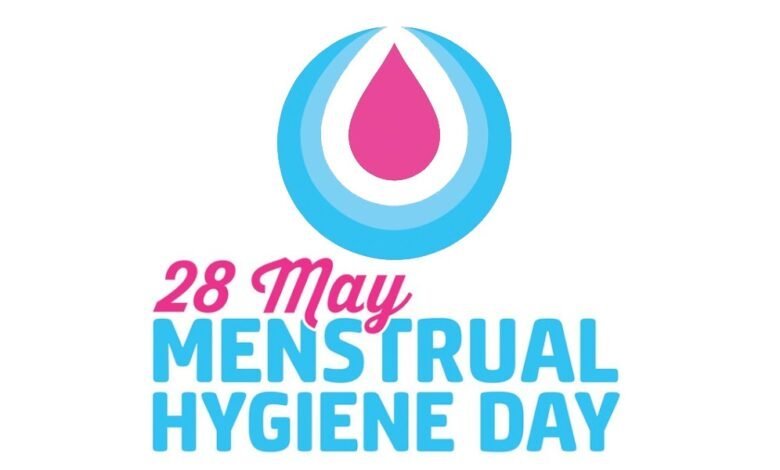Menstrual Hygiene Day: Normalizing Periods, Prioritizing Health

Every year on May 28, we commemorate World Menstrual Hygiene Day, often referred to as MH Day. This day is dedicated to promoting good menstrual hygiene practices to keep girls and women healthy during their menstrual cycles. It aims to raise awareness about the importance of menstrual hygiene and challenge the societal taboos and stigma surrounding menstruation.
The date, May 28, was selected because it symbolically represents the average menstrual cycle: 28 days in a cycle and 5 days of menstruation (May being the 5th month).
Theme of Menstrual Hygiene Day 2025
The theme for Menstrual Hygiene Day 2025 is “Together for a #PeriodFriendlyWorld.” This theme emphasizes global solidarity in the fight to eliminate the stigma and discrimination surrounding menstruation.
It calls for collective action to ensure that by 2030, menstruation is recognized as a normal and healthy part of life, and that it no longer hinders access to opportunities, healthcare, or education for anyone who menstruates.
What is Menstrual Hygiene?
Menstruation is a natural biological process in which the uterus sheds its lining, resulting in the discharge of blood and tissue through the vagina.
Menstrual hygiene refers to the practices and conditions that allow individuals to manage their periods safely, comfortably, and with dignity.
This includes having access to clean and effective menstrual products, such as pads, tampons, or menstrual cups, being able to change these products in private as needed, and having proper facilities to dispose of them hygienically.
Maintaining good menstrual hygiene also involves access to clean water, soap, and accurate information about menstrual health.
History of Menstrual Hygiene Day
Menstrual Hygiene Day was initiated by the German NGO WASH United to raise awareness about the importance of menstrual hygiene. In 2013, WASH United launched a 28-day social media campaign to bring attention to menstruation-related issues.
Following the positive response, the first official Menstrual Hygiene Day was celebrated on May 28, 2014, through public events such as rallies, exhibitions, seminars, and awareness campaigns.
The date, May 28, was chosen purposefully. May, being the 5th month, symbolizes the average duration of menstruation (5 days), and 28 represents the average length of a menstrual cycle (28 days.
The Importance of Menstrual Hygiene Day
Menstrual Hygiene Day plays a crucial role in:
1. Breaking Taboos
Celebrating Menstrual Hygiene Day encourages open discussions about menstruation to challenge stigmas and misconceptions deeply rooted in many societies.
2. Promoting Education
It ensures that girls receive accurate and age-appropriate information about menstrual health and hygiene.
3. Improving Access
It advocates for increased access to safe and affordable menstrual products for young girls.
4. Empowering Girls
It provides the necessary resources and support to manage menstruation with dignity, which is essential for achieving gender equality.
How to Maintain Hygiene During Menstruation
The Centers for Disease Control and Prevention (CDC) recommends the following guidelines to maintain proper menstrual hygiene:
- Wash your hands before and after handling any menstrual products.
- Do not flush menstrual products; instead, wrap them in toilet paper and dispose of them in a covered bin.
- Change sanitary pads every few hours, even during a light flow.
- Change tampons every 4 to 8 hours to reduce the risk of Toxic Shock Syndrome (TSS).
- Clean menstrual cups daily during your period and sterilize them after your cycle ends.
- Wear breathable cotton underwear and practice front-to-back cleaning to prevent infections.
- Stay hydrated by drinking plenty of water to support your overall health during menstruation.
How Does Menstrual Hygiene Impact Health?
Maintaining good menstrual hygiene is critical to the health of our young girls. It can affect the following:
a. Physical Health
Poor menstrual hygiene can lead to urinary tract infections (UTIs), reproductive infections, and other health issues.
b. Mental Health
Stigma, embarrassment, or lack of support can contribute to stress, anxiety, and low self-esteem, especially in young girls.
c. Education
Lack of menstrual products or inadequate school facilities can cause absenteeism, disrupting the education of many girls.
d. Economic Impact
Missing school or work due to menstrual issues can have long-term financial consequences and reduce productivity.
Ways to Improve Menstrual Hygiene
To ensure better menstrual hygiene management for our young girls, the following steps are essential:
i. Policy Support
Governments should prioritize menstrual health in public health agendas and allocate sufficient resources to related initiatives.
ii. Infrastructure
Build and maintain period-friendly sanitation facilities in schools, workplaces, and public areas.
iii. Access to Products
Make menstrual products affordable and accessible to young girls.
iv. Education
Implement comprehensive menstrual health education in schools and communities to empower girls with knowledge and confidence.





